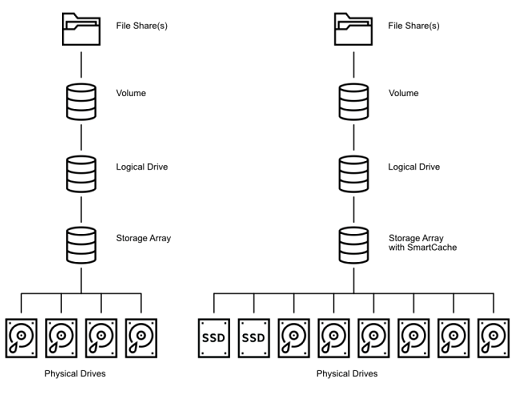Storage architecture
HPE preconfigures every model in the sixth generation HPE StoreEasy 1000 Storage system family with the Windows Storage Server 2016 operating system in the factory. All required operating system roles and features, and additional management software tools are enabled for managing the system as a file server.
The image for System architecture for sixth generation StoreEasy 1000 Storage, depicts the file server architecture with its physical and logical layers. Each layer in the architecture, adds essential capabilities to the data storage function of the HPE StoreEasy Storage system as a whole. Components in higher layers in the architecture rely on the distinct capabilities of related lower-level components.

Physical drives–provide persistence of data and are the most granular physical components in the architecture.
Storage arrays–organize physical drives into hardware-based redundant array of inexpensive drives (RAID).
Logical drives–facilitate an abstraction layer on top of storage arrays that allows users to partition storage arrays into smaller units of capacity.
Volumes–enable the usage of logical drives to store files and folders.
File shares– allow users to access folders in a volume, over an Ethernet network.